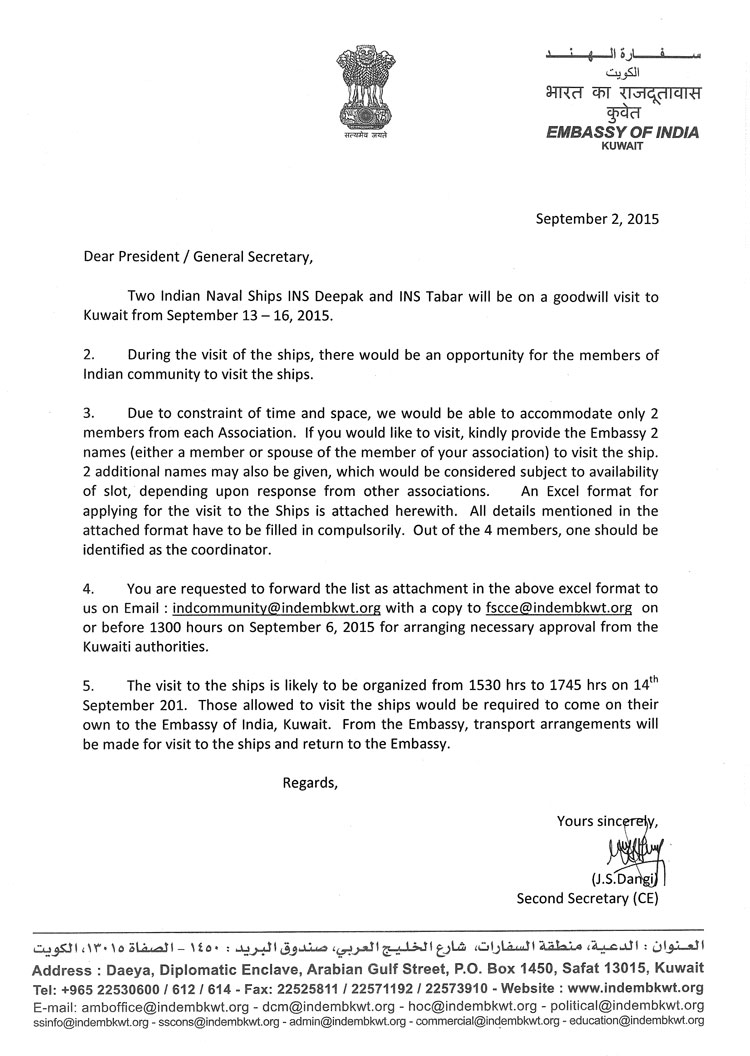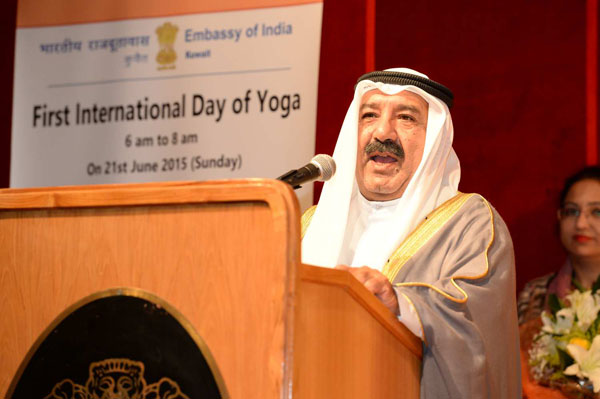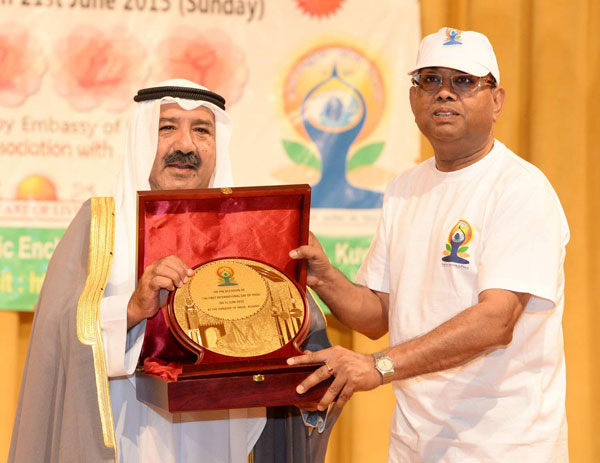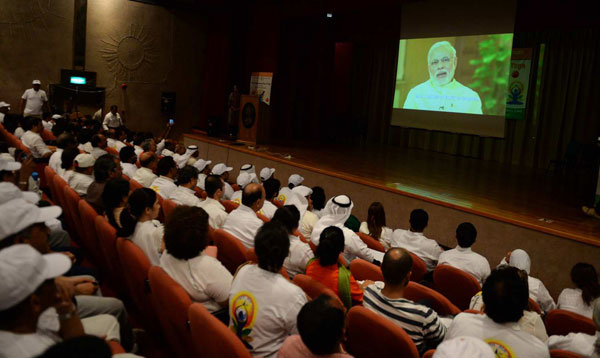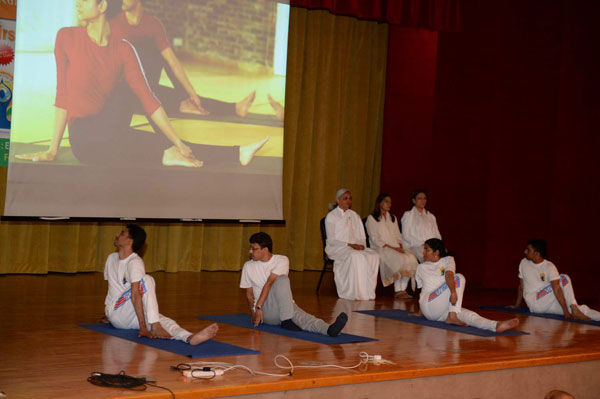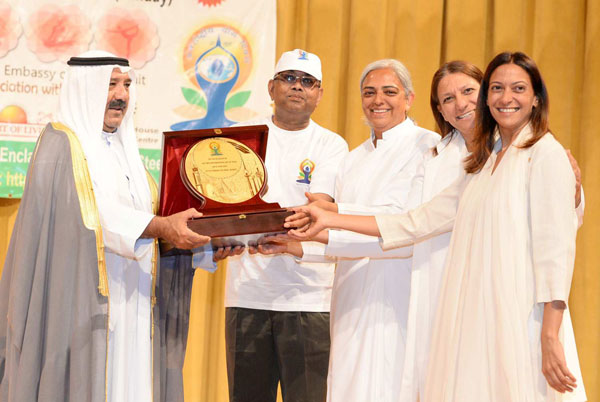- Details
-
Category: Embassy News
-
Published: Tuesday, 29 September 2015 03:48
Starting of Visa Services At CKGS Jleeb Al Showaikh (Abbasiya) Centre
The Embassy is pleased to announce that with effect from 28 September, 2015, Indian Passport and Visa Service Center, M/s Cox & Kings Services (CKGS), Kuwait will be providing visa services to Kuwaiti nationals and expatriates in Kuwait at Jleeb Al Showaikh (Abbasiya) 2nd Floor, Jleeb Al Shuyoukh Block 1,Street 1, Xcite Building, Kuwait, in addition to the present passport services. The above centre functions from 8 AM - 12 noon and then from 4 PM - 8 PM on all working days and from 4 PM to 8 PM during closed holidays on Fridays and Saturdays.
2. There has been an appreciable increase in issue of visas by the Indian Embassy in last two years. The Embassy has further simplified its visa procedures and has been issuing 5-year and 1-year business visa (multiple entry) and 6- month tourist visa (multiple entry) to Kuwaiti nationals (as well as foreign nationals resident in Kuwait). All those travelling to India regularly are advised to apply for tourist visa (6 month multiple entry) or long-term business visa (5 year or 1-year multiple entry).
3. The visa work of the Embassy has been outsourced to M/s CKGS, Kuwait and applicants can visit Passport and Visa Centres of CKGS in (a) Indian Visa and Passport Application Centre, 17th Floor, Behbahani Building, Sharq, Kuwait : Tel. No. 22440392 (e- mail: indiavisa.kuwait@ckgs.com)or ; (b) Indian Visa and Passport Application Centre, Complex Kais Alghanim, 4th Floor, Mecca Street, in front of Annod Complex, Fahaheel, Kuwait: Tel. No. 22909229 ( e-mail: indiavisa.kuwait@ckgs.com). (c) Jleeb Al Showaikh (Abbasiya) 2nd Floor,Jleeb Al Shuyoukh Block 1,Street 1, Xcite building, Kuwait Tel. No. 24342428) ( e-mail: indiavisa.kuwait@ckgs.com). The website of CKGS, Kuwait is https://www.kw.ckgs.in/
4. In emergency cases, the Embassy will accept the visa applications directly at its Visa Wing from applicants. Applicants may also call the Embassy for any visa related query at Tel. No. 22530600 Extn. 279 or call Mr. K.K. Pahel, First Secretary (Consular) at Mobile No. 97229948.
- Details
-
Category: Embassy News
-
Published: Wednesday, 23 September 2015 03:57
Punjab is hosting the Second Progressive Punjab Investors Summit
The Government of the State of Punjab (India) is hosting the Second Progressive Punjab Investors Summit at Indian School of Business, SAS Nagar, Mohali on 28--29 October 2015. This summit will focus on Agro and Food Processing, Life Sciences, Healthcare, Manufacturing, Education, IT, Renewable Energy and Tourism. In its efforts to attract investment, the Government of Punjab has taken rapid strides in improving infrastructure, up-skilling workforce and sector specific initiatives. A single window clearance system-INVEST PUNJAB- has been created for all regulatory and fiscal incentive related approvals.
All those who are interested may please browse www.progressivepunjab.gov.infor the complete details including process of registration.
- Details
-
Category: Embassy News
-
Published: Wednesday, 23 September 2015 03:53
Phasing out of Hand-Written Passports
All Indian nationals residing in Kuwait holding hand written passports are advised to apply for urgent re-issuance of new passports in lieu of handwritten passports under the following circumstances:-
(a) The International Civil Aviation Organisation (ICAO) has set a deadline of the 24 November 2015 for globally phasing out of all non-Machine Readable Passports (MRPs). From 25th November 2015 onwards, foreign Governments may deny Visa or entry to any person travelling on a non-Machine Readable Passport.
(b) The Government of India has been issuing Machine Readable Passports since 2001. The Passports, however, issued before 2001 and particularly those issued during mid 1990s with a validity of 20 years will fall in the category of non-MRPs. All handwritten passports with pasted photographs are also considered non-MRPs.
(c) Indians living in Kuwait holding handwritten passports as explained in Para(b) above, with validity beyond 24th November 2015 are advised to apply urgently for re-issue of their passports well before the deadline in order to avoid any inconvenience in obtaining valid visa for international travel.
(c) For more details related to passport services, visit the website – https://www.indembkwt.org/Pages/Passport.aspx- or call Mr. Thomas Joseph, Attache(Consular) at Mob: 97229946 or Mr. K.K. Pahel, First Secretary(Consular) at Mob: 97229948.
- Details
-
Category: Embassy News
-
Published: Thursday, 10 September 2015 12:49
Indian Industry to showcase its mettle at “BIG 5 Kuwait”
14-16 September 2015
The Confederation of Indian Industry (CII), New Delhi with the support of the Ministry of Commerce and Industry, Government of India, New Delhi is organizing an “INDIA PAVILION” at ‘THE BIG 5 Kuwait’, an International Construction Technology & Building Materials Trade Exhibition, being held at the Kuwait International Fair Ground (Hall 6), Mishref, Kuwait from 14-16 September 2015.
2. Kuwait’s Development Plan (2015-2020) envisages diversifying its economy away from oil and increasing investment in sectors such as real estate, construction of new cities, hospitals, housing units, infrastructure, roads, airports, metro and railway projects, power and transmission, petrochemicals, gas processing and pipelines among others. This represents a major opportunity for Indian companies to step up its bilateral economic relations with Kuwait. Total bilateral trade between India and Kuwait during the Financial Year 2014-15 was US$ 14.58 billion. Out of this, India’s import of POL from Kuwait amounted to US$ 12.22 billion, while non-oil bilateral trade was a little over US$ 2 billion. As there is a need to deepen and widen the trade basket between our two countries, “India Pavilion” at “The BIG 5 Kuwait will provide an excellent platform for networking and one-to-one business meetings with potential customers.
3. 50 leading companies from India are expected to participate in the India Pavilion. These companies will showcase a wide range of products including building material & construction equipment; bathrooms, kitchens & sanitaryware; marble, ceramic & stone; metal, steel & aluminum; concrete & related products; construction tools; conveying systems; decorative products; electrical systems; facilities management services; finishes (coating, painting, gypsum, tiling); fire suppression & protection; glass & glazing; HVAC; landscaping products & services; building services; communications; pipelines; plumbing & water technology; PMV & related products; safety & security equipment; scaffolding; software & IT; special construction (swimming pools, fountain); thermal moisture, protection & insulation; windows, doors & cladding; wood, plastic & composite, etc.
- Details
-
Category: Embassy News
-
Published: Monday, 07 September 2015 03:53
National Voters Service Portal Created for NRI's
The Election Commission of India (ECI) is examining the feasibility of extending voting rights to overseas Indians through E-postal ballot or proxy voting. Meanwhile, the measures are also being taken under ECI’s Systematic Voters Education and Electoral Participation (SVEEP) programme to reach out to the Non-Resident Indians to facilitate their registration in the electoral roll.
2. The National Voters Service Portal (NVSP) has recently been launched for Indian nationals to provide online registration facility, besides all other services related to electoral registration such as correcting entries, change in address, searching names on electoral roll. The link to this portal is https://www.nvsp.in which will enable the Non-Resident Indians (NRIs) to enroll themselves.
- Details
-
Category: Embassy News
-
Published: Thursday, 03 September 2015 07:17
Visit of two Indian Naval Ships
|
Name of the School : |
|
|
|
|
|
Sl. No. |
Name (as in civil ID) |
Nationality |
Civil ID No. |
Phone No. |
|
|
1 |
|
|
|
|
|
|
2 |
|
|
|
|
|
|
3 |
|
|
|
|
|
|
4 |
|
|
|
|
|
|
5 |
|
|
|
|
|
|
6 |
|
|
|
|
|
|
7 |
|
|
|
|
|
|
8 |
|
|
|
|
|
|
9 |
|
|
|
|
|
|
10 |
|
|
|
|
|
|
11 |
|
|
|
|
|
|
12 |
|
|
|
|
|
|
13 |
|
|
|
|
|
|
14 |
|
|
|
|
|
|
15 |
|
|
|
|
|
|
16 |
|
|
|
|
|
|
17 |
|
|
|
|
|
|
18 |
|
|
|
|
|
|
19 |
|
|
|
|
|
|
20 |
|
|
|
|
|
|
|
|
|
|
|
|
|
|
Teacher |
|
|
|
|
|
1 |
|
|
|
|
|
|
2 |
|
|
|
|
|
|
|
|
|
|
|
|
|
|
Details of Driver along with copie of civil ID & driving licence |
|
|
|
|
|
|
|
|
|
|
|
Name of driver |
|
|
|
|
|
1 |
|
|
|
|
|
|
|
|
|
|
|
|
|
|
|
|
|
|
|
|
|
Details of the Bus |
Bus No. |
|
|
|
|
1 |
|
|
|
|
|
|
Name of the Association : |
|
|
|
Sl. No. |
Name (as in civil ID) |
Nationality |
Civil ID No. |
Phone No. |
|
1 |
|
|
|
|
|
2 |
|
|
|
|
|
|
Additional Names |
|
|
|
|
1 |
|
|
|
|
|
2 |
|
|
|
|
********************************************
- Details
-
Category: Embassy News
-
Published: Friday, 07 August 2015 11:45
Services Rendered Under ICWF
Since 2009, the Embassy has set-up an Indian Community Welfare Fund (ICWF) to provide assistance to Indian community, on a means tested basis in most deserving cases. Following services are rendered under ICWF:
(i) Boarding and lodging for distressed overseas Indian workers in Household / domestic sectors and unskilled workers; (ii) extending emergency medical care to the overseas Indians in need; (iii) providing air passage to stranded overseas Indians in need;(iv)providing initial legal assistance to the overseas Indians in deserving cases, and; (v)incurring expenditure on incidentals and for airlifting the mortal remains to India or local cremation/burial of the deceased overseas Indian in such cases where a sponsor is unable or unwilling to do so as per the contract and the family is unable to meet the cost.
2. The Embassy has been utilizing the funds under ICWF for providing required assistance to distressed Indian workers as per guidelines prescribed. The details of amount spent from ICWF and the total number of beneficiaries and cases of transportation of mortal remains assisted from 2009 till July 2015 are given below for information.
|
ICWF expenditure
(January 2009 – July 2015)
|
|
Year
|
Total amount of money spent
(Indian Rupees)
|
Total number of persons who benefited from ICWF
|
Cases of Transportation of Mortal Remains under ICWF
|
|
2009
|
83,54,000
|
772
|
46
|
|
2010
|
35,02,000
|
653
|
43
|
|
2011
|
77,63,000
|
1,078
|
45
|
|
2012
|
65,43,000
|
1,037
|
32
|
|
2013
|
90,37,000
|
790
|
24
|
|
2014
|
90,94,000
|
1,141
|
29
|
|
Jan-July 2015
|
31,03,000
|
443
|
19
|
|
Total
|
4,73,96,000
|
5,914
|
238
|
- Details
-
Category: Embassy News
-
Published: Tuesday, 04 August 2015 13:23
National Pension System (NPS) for Non Resident Indians
The Government of India has launched the National Pension System (NPS) for the benefit of 10 million Non-Resident Indians (NRIs) so as to provide old age security to Indians, both in India and abroad. A copy of Embassy’s press release on 9 April 2015 is enclosed for ready reference. Recently, in this regard, Pension Fund Regulatory and Development Authority (PFRDA) held a conference on NPS for NRIs at New Delhi, where based on discussions with the various stakeholders, following steps towards making NPS available to NRIs were taken.
a. Upload of the FAQs specific to NPS for NRI segment.
b. Simplification of the application form of NPS for NRIs and its upload on our website.
c. Streamlining the distribution channel for operationalizing the scheme through the Bank branches doing/ authorized to do NRI business.
d. Developing specific communication strategy for promoting the scheme.
e. Information emailers to various non-resident Indian associations.
The details of NPS for NRIs are enclosed (which includes eligibility, source of contribution, contributions in NPS, salient features of Investment choices, Salient Features of Fund Management Schemes, Exit & Withdrawal Rules, 7-step Registration procedure, etc.). For any clarification/ further details, please contact Mrs. Mamta Rohit, Chief General Manager, PFRDA e-mail: mamta.rohit@pfrda.org.in; (ii) Mr. Akhilesh Kumar, Deputy General Manager, PFRDA, e-mail: akhilesh.kumar@pfrda.org.in; (iii) Mrs. Sumeet Kaur Kapoor, General Manager, PFRDA, e-mail: sumeet.kapoor@pfrda.org.in; telephone: +91-11-26897937. Details on the NPS are also available on PFRDA’s website: www.pfrda.org.in.
The Embassy requests all the Presidents and Secretaries of the Associations to disseminate the information amongst all the members of the associations/communities and bring awareness with wide publicity about NPS for NRIs.
|
National Pension System (NPS) for Non Resident Indians (NRIs)
|
|
|
|
The Government of India has launched the National Pension System (NPS) for the benefit of 10 million Non-Resident Indians (NRIs) so as to provide old age security to Indians, both in India and abroad.
While most NRIs remit a large part of their earnings to India, in the form of bank deposits, share investments, real estate acquisitions etc., unfortunately very little is saved for old age financial security. It is in this context that the National Pension System (NPS) has been launched by the Government of India (GOI) and supervised by the Pension Fund Regulatory and Development Authority (PFRDA), New Delhi.
Although NPS was initially launched for government and semi-government employees w.e.f. 1 January 2004, it has now been made available to every Indian citizen from May 2009 on a voluntary basis. The scheme is open to all citizens of India, whether resident or non-resident between 18-60 years of age. Till 31 March 2015, the NPS had a total of 8.5 million subscribers and manages around Rs. 80,000 crore of funds.
The NPS is a well regulated and transparent scheme. It is portable across geographies and employments. It being technology driven, subscribers can view their accounts online. It has laid down prudent investing norms for the fund managers, and their performance and portfolios are regularly monitored by the NPS Trust and under the overall supervision of the PFRDA, the statutory regulator. The scheme offers complete flexibility to investors in terms of choice of investment mix. The investor decides the percentage of the corpus that goes into equities, corporate bonds and government securities, with the only limitation being that there is a 50% cap on the exposure to equities. Hailed as one of the lowest cost pension products in the world, its returns have generally outperformed the market. The returns under the Citizen scheme, which would be applicable to NRIs, are given below:
Returns on Annual compounding basis on the various schemes
under NPS since inception
|
|
Compound Annual Growth Rate
(Since inception)
|
|
Scheme
|
For the period ending 31.03.2014
|
For the period ending 30.09.2014
|
|
E (Equity)
|
9.20%
|
12.84%
|
|
C (Corporate Debt)
|
10.53%
|
10.84%
|
|
G (Govt. Securities)
|
7.93%
|
8.79%
|
|
Pvt. Sector Overall (Weighted Average)
|
7.67%
|
9.15%
|
For more details on the NPS, Mrs. Sumeet Kaur Kapoor, General Manager, Pension Fund Regulatory and Development Authority (PFRDA), New Delhi can be contacted either by e-mail at sumeet.kapoor@pfrda.org.in or by telephone at +91-11-26897937. Details on the NPS are also available on PFRDA’s website: www.pfrda.org.in.
|
- Details
-
Category: Embassy News
-
Published: Monday, 03 August 2015 16:49
Swami Vivekananda was among the first Indian leader in pre-independence era who realised that the real solution to the problems in India lay in the eradication of poverty. Swami Vivekananda has inspired many persons over the last 150 years, including personalities like Prime Minister Narendra Modi and Anna Hazare who have been influenced by his teachings and vision of life.
2. The impact of Swami Vivekananda’s teachings and belief about his vision for India can be seen at www.nationalyouthday.com. This website currently features an inspiring video about Swami Vivekananda which has been screened at various events. All those who are inspired by Swami Vivekananda can download the forms from the above website and share the same with nationalyouthday.12jan@gmail.com.
==================================
- Details
-
Category: Embassy News
-
Published: Tuesday, 28 July 2015 17:55
Following the sad demise of Dr A.P.J. Abdul Kalam, former President of India (2002-07), on 27 July 2015, the Government of India is observing a seven-day State mourning in the honour of Dr Abdul Kalam from 27 July – 2 August, 2015, as a mark of deep respect to the departed Indian leader.
2. A condolence book will be kept open at the Embassy on Wednesday, 29 July 2015 and Thursday, 30 July 2015 from 0930 hrs -1230 hrs and from 1430 hrs-1700 hrs for the members of Indian community in Kuwait to facilitate all those who wish to pay their homage to Dr A.P.J. Abdul Kalam.
==================================
- Details
-
Category: Embassy News
-
Published: Saturday, 25 July 2015 12:09
1. Contact Consular Wing (Tel: 22530600 ext. 271 / 244) with a copy each of the (a) Passport / Civil identity card of the deceased, (b) Death Report issued by the hospital authorities / mortuary (c) Civil Identity Card of the person intimating the death to the Embassy and (d) letter from the employer (in case of company workers).
2. The Embassy will issue an authority letter in favour of the next of kin of deceased for collection of death certificate, passport, police report etc. from local authorities.
3. In an instance of police case, to approach police station to collect clearance from the police authorities.
4. To approach death and birth registration office of the area in which the deceased died, for obtaining the death certificate.
5. To approach death and birth registration office, Maidan Hawalli behind Police Station, either for collecting the death certificate or endorsing the death certificate issued by death and birth registration office of other governates.
6. Death certificate issued by birth and death registration office. Endorsed by Main office of birth and death registration office (Maidan Hawalli). This is required to be attested by Ministry of Foreign Affairs, Consular Section, located at Shuwaikh which is next to Kuwait News Agency Building or Liberation Tower in Murgab.
7. After attestation from the Ministry of Foreign Affairs, the death certificate is required to be translated into English by any authorized translator in Kuwait.
8. To approach Embassy for registration of death: The following documents
are required for registration of death in the Embassy.
(a) Original Passport of the deceased
(b) Passport copy of the deceased
(c) Death certificate in duplicate, duly attested by the Ministry of Foreign Affairs of the State of Kuwait.
(d) Translation of death certificate. (Duplicate)
(e) Two copies of Police report. (in case of accidental death)
9. To approach any airlines and obtain ticket / airway bill with confirmed date and time for air-lifting of mortal remains. If you wish to send by Air India, please contact Mr. Rajendran from House of Travels, Tel: 24315538 /48 Mob: 66588786, Mr. Najib Mobile: 99531193, Mr. Jaffer Mobile:. 60744460.
10. Approach Al- Sabah Hospital (mortuary) for obtaining appointment for sealing of coffin box. The doctor will issue three slips (1) for Farwaniya mortuary or hospital where the body is kept for transfer of dead body to Sabah Hospital (ii) in-charge of coffin box (iii) Indian Embassy, Kuwait.
11. Approach the Embassy with the doctor’s slip along with a copy of airway bill and passport copy of the deceased.
12. After sealing of the coffin box doctor will issue embalming certificate in Arabic which is to be translated into English and hand it over to the concerned representative of the airlines.
13. To approach three hours before the flight time to Al- Sabah Hospital main block for ambulance for transportation of the coffin box from the hospital’s mortuary to the airport.
The above procedures/steps can also be seen on the following link :-
http:www.indembkwt.org/pages/death.aspx
==================================
- Details
-
Category: Embassy News
-
Published: Saturday, 25 July 2015 12:05
Unfortunately, there has been an increase in the arrest/ detention of Indian nationals in cases of alleged possession of drug & narcotics in Kuwait. At present, more than 60% of total Indian nationals who have been detained and are serving sentences in Central jail of Kuwait in cases relating to drugs/ narcotics.
2. It is to reiterate that anyone caught with drugs in Kuwait has to abide by the legal system of the country wherein the role of Embassy is restricted to minimum. The punishment under the Kuwaiti laws for violation of drug related crimes are often very severe and may lead to life imprisonment or even execution. Moreover, in Kuwait, a person is considered guilty until he/she is proven innocent & that the person knew nothing about the drugs makes it often very difficult to prove. Bail in such cases is usually not given and one has to spend several months in detention while the case progresses through the judicial system. Therefore, one must strictly obey rules and regulations regarding the laws about drugs in this country.
3. The Embassy would like to re-emphasise the following information for the attention of the Indian Community in Kuwait:
4. What are Narcotics/Drugs?
There are, generally, many kinds of drugs some are prescribed while others are known as club drugs, illicit or illegal substance and designer drugs, which include:
(i) Antidepressants,
(ii) Barbiturates,
(iii) Cannabis,
(iv) Depressants,
(v) Hallucinogens,
(vi) Inhalants,
(vii) Narcotics [Marijuana, Morphine, Cocaine, Heroin, Dry ICE, LSD,
MDMA (ecstasy), amphetamines (speed)].
(viii) Steroids,
(ix) Stimulants,
(x) Tobacco.
(The list is only indicative and not exhaustive).
5. Suggestions for taking precaution and/or safety tips for Indian community
It is observed that some people become an unwitting/ unknowingly drug carriers when they accept the request of their friend(s) or relative(s) by accepting packets/ gifts/ small bags etc in India for delivering to their contacts in Kuwait. One can avoid becoming an unwitting drug carrier by refusing such items where its contents are not clear. Also, always remain attentive so that drug dealers might not hide drugs in your luggage at the airport. Always get your luggage sealed at the airport & never leave your luggage unattended. Besides never take a parcel for another person without checking what’s inside. One should strictly avoid accepting any such packet or gift from strangers at airport or with a person you develop friendship during travel. These things may contain narcotics or prohibited medicines which would result in arrest and punishment in Kuwait.
6. Further, the monetary temptation should be avoided where you are asked to visit a place, hold a packet, keep packet/ friends attaché/ suitcase with you for some time, keep friend’s bag in your room, etc as these are some of the tricks which may land you up in the police net with jail term for transporting/ possessing narcotics. Taxi drivers should avoid carrying any bag without the owner on board and should remain vigilant in case passenger tried to leave something in the car while alighting.
6. Use/carrying of Prescription Medicine from India to Kuwait
The general medicine should be brought with doctor’s prescription and the quantity should not exceed the requirement of two weeks. Further, Ayurvedic/Homeopathic medicine due to its composition can be construed as containing alcohol while narcotics can be camouflaged as white sugar pills. Hence, one should be careful while bringing these medicines and must carry doctor’s prescription and possess limited quantity. One must check also with the Kuwaiti authorities about latest updates on regulations governing carrying of medicines from abroad.
7. The above guidelines are indicative and issued in the interest of the Indian community for taking adequate precautions and to strictly observe the laws of land relating to narcotics/ drugs in Kuwait.
8. Your suggestions/ comments in the matter may please be sent to the Embassy.
==================================
- Details
-
Category: Embassy News
-
Published: Friday, 17 July 2015 04:05
Visa Charges for Kuwaiti Nationals
From 19 July 2015 onwards, Indian Passport and Visa Service Centres at Sharq and Fahaheel will function from 8 AM - 12 noon and then 4 PM - 8 PM on all working days. Visa charges for Kuwaiti nationals are as under:-
(i) Tourist visa: 6 months multiple entry----------------KD 13
(ii) Business visa : 1 year multiple entry-----------------KD 38
(iii) Business visa: 5 years multiple entry-----------------KD 63
(iv) Transit visa : 15 days single/double entry---------KD 7
(v) Student visa : 5 years multiple entry-----------------KD 24
(vi) Medical visa : one year multiple entry-----------KD 38
2. In cases of emergency, visas can be taken directly from Embassy on payment of applicable charges.
- Details
-
Category: Embassy News
-
Published: Tuesday, 14 July 2015 05:03
Indian Embassy Eid Holidays
The Embassy will be closed on Friday, 17 July 2015 on the happy occasion of Idu’l Fitr. Emergency services will be however, available on that day.
2. The Embassy will function as usual on Sunday (19 July 2015) and Monday (20 July 2015).
- Details
-
Category: Embassy News
-
Published: Monday, 06 July 2015 08:14
Average Time Taken to Repatriage Mortal Remains of Indian Nationals
From Kuwait to India
The Embassy has registered 290 deaths of Indian nationals during the period from 01 January 2015 to 30 June 2015. The mortal remains of 49 deceased Indian nationals were buried in Kuwait, as per the wishes of their family members, whereas mortal remains of 241 deceased Indian nationals were airlifted to India for last rites. The average time taken in Kuwait to repatriate mortal remains to India is 4 days.
********************************************************
- Details
-
Category: Embassy News
-
Published: Tuesday, 30 June 2015 18:04
The Embassy of Kuwait in New Delhi has announced that the Kuwaiti authorities will henceforth accept medical reports only from GAMCA (GCC Approved Medical Centres Association) Medical centres in India replacing the services of M/s Khadamat Integrated Solutions Pvt Ltd. A copy of the Embassy of Kuwait, New Delhi’s Notice dated 29 June 2015 is attached for reference.
==================================
- Details
-
Category: Embassy News
-
Published: Saturday, 27 June 2015 19:07
The Embassy regrets to inform about the death of two Indian nationals in the bomb blast at Imam Sadiq Mosque, Kuwait on 26 June 2015. Both were taking part in the prayers when they died. Their details are given below:
(i) Shri Rizwan Husain, DOB 29/6/1984, Passport No. H-0338720, date of issue 14/8/2008 from Lucknow, Resident of Village Walipur, PS Baldipur, District Sultanpur, UP, who was working as a watchman in the Mosque.
(ii) Shri Ibne Abbas, DOB 20/07/1989, passport No. M-1629683, date of issue 28/08/2014 from Lucknow, Resident of 151 Jafarabad, The. Jalalpur, Ambedkar Nagar, UP, who was working as driver.
2. In view of the bomb blast on 26 June 2015, all members of Indian community in Kuwait are advised to take precautions for their safety and security in the country.
==================================
- Details
-
Category: Embassy News
-
Published: Monday, 22 June 2015 09:37
The celebrations of First International Day of Yoga
**************************************
- Details
-
Category: Embassy News
-
Published: Wednesday, 17 June 2015 11:18
OBSERVE INTERNATIONAL DAY OF YOGA
The Embassy is celebrating First International Day of Yoga (IDY) on 21 June 2015 (Sunday) from 0600 hrs to 0800 hrs at the Embassy premises. Embassy is pleased to inform that large number of people have registered their participation online. For the benefit of all participants and to avoid traffic congestion, a transportation service (27 Seater Coaster buses) have been arranged from the following three locations:
1. From Fahaheel - Al Amal Clinic and one stop at Souq Sabah
2. From Abbassiya - Opp. Udupi Hotel (Bhavans School) and one stop at United Indian School
3. From Salmiya - Salmiya Garden entrance/Parking and one stop at Thakkar Restaurant.
2. Please note that transportation service will be available from 5 AM till 5.15 AM at the above locations. There will be only one trip from these three locations. Those who are desirous of availing this service must reach at above locations at 5 AM sharp in order to board the buses on time. The buses will also drop the participants back at the same place after the yoga session is over.
******************************************************
- Details
-
Category: Embassy News
-
Published: Monday, 15 June 2015 10:44
INTERNATIONAL FELLOWSHIP IN THE INDIAN COUNCIL FOR AGRICULTURAL RESEARCH
The Indian Council for Agricultural Research (ICAR) which is an autonomous body under the Department of Agricultural Research and Education (DARE), Ministry of Agriculture, New Delhi invites applications for NETAJI SUBHAS-ICAR International Fellowship (ICAR-IFs) for the academic year 2015-16.
2. The number of fellowships available for a programme leading to Ph.D. degree under this scheme is 30 and the allocation of fellowships between Indian and Overseas students will depend upon the availability of good candidates in the identified priority areas.
3. The details for the admission procedure, guidelines, eligibility criteria, priority areas of study etc. are available on the ICAR Website www.icar.org.inand the applications are to be submitted on-line/by post to the Assistant Director General (EQR), Education Division, ICAR Krishi Anusandhan Bhawan-II, Pusa, New Delhi-110012 (E-mail: adgeqr@gmail.com).
4. The last date for receiving the application in Indian Council for Agricultural Research is 30 June 2015.
***************************************************




